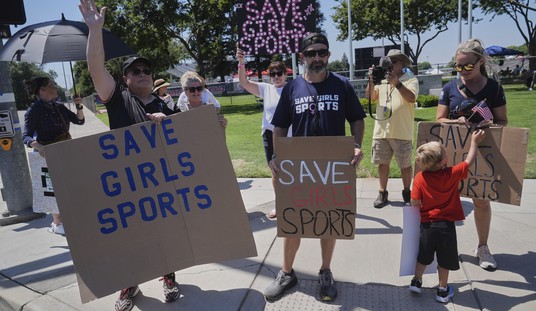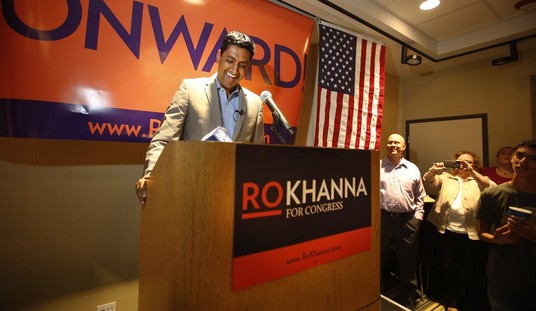In two months, we’ll come up to the four-year anniversary of the technical recovery after the Great Recession. The Obama administration has thrown hundreds of billions of dollars in stimulus efforts, and insists that the economy has recovered and is strengthening. The Census Bureau’s latest measure of poverty offers a much different conclusion about US economic policy over the last four-plus years:
The U.S. Census Bureau puts the number of Americans in poverty at levels not seen since the mid-1960s when President Lyndon B. Johnson launched the federal government’s so-called War on Poverty.
As President Barack Obama began his second term in January, nearly 50 million Americans — one in six — were living below the income line that defines poverty, according to the bureau. A family of four that earns less than $23,021 a year is listed as living in poverty.
The bureau said 20 percent of the country’s children are poor.
In terms of percentage of population, the new level exceeded 16% in November 2012, according to the Census Bureau:
As President Barack Obama is set to begin his second term, new statistics on America’s poverty rate
indicate that nearly 50 million Americans, more than 16 percent of the population, are struggling to survive.
New figures released by the Census Bureau this week found a spike in poverty numbers last year, going from 49 million in 2010 to 49.7 million last year. The numbers may come as a surprise to Congress, which estimated in September that the poverty rate would drop to 46.2 million. One of the most startling findings showed that almost 20 percent of American children continue to live in poverty.
At the end of 2008, as Obama prepared to take office, it stood at 13.2%, thanks in part to the job losses of the Great Recession. Six months later, Obama and the Democrats passed an $800 billion stimulus bill on top of the $700 billion TARP tranches paid out by both the Bush and Obama administrations, which supposedly would fuel stronger fundamentals and better growth than the policies employed during the 2003 recession, which Obama (erroneously) blamed for the collapse.
Nor is that the only measure of the practical economy at odds with the celebration of economic recovery. Last week, Erika noted that the use of food stamps has exploded, particularly in the last few years:
Enrollment in the Supplemental Nutrition Assistance Program, as the modern-day food-stamp benefit is known, has soared 70% since 2008 to a record 47.8 million as of December 2012. Congressional budget analysts think participation will rise again this year and dip only slightly in coming years.
The biggest factor behind the upward march of food stamps is a sluggish job market and a rising poverty rate. At the same time, many states have pushed to get more people to apply for SNAP, a program where the federal government picks up the tab.
In the article, an Obama administration official points to the rising levels of poverty over the last four years to explain the explosive growth in SNAP recipients:
Kevin Concannon, undersecretary for food, nutrition and consumer services at the Department of Agriculture, said SNAP is working as designed, expanding to extend benefits to more Americans as poverty levels increase. He said USDA officials expect the program to soon begin contracting as the economy improves.
“While the perception may be different, the actual raw numbers, almost 50 million people [under the federal poverty level], is certainly one of the principal reasons why we see the enrollment increases in the SNAP program,” he said. A more aggressive effort to get people on the rolls and changes in the eligibility standards were also factors, he said.
Clearly, the economy isn’t improving, not with rising poverty and a record-low workforce. In my column for The Fiscal Times today, I offer this simple comparison to demonstrate the disconnect between reality and the White House spin on their performance:
Over 50 million people now live in poverty, according to a recent release by the US Census Bureau. At the end of 2010, after the passage of the $800 billion stimulus bill and eighteen months of technical recovery, that number was 46 million according to Census Bureau statistics. At the end of 2008, at the depth of the Great Recession and as President Obama first took office, that number was below 40 million.
We have added 10 million people into poverty since Obama took office, most of whom fell into poverty after the stimulus and the technical recovery began. In comparison, we have only added 123,000 jobs over the same period, according to the BLS Current Population Survey, which showed a seasonally-adjusted employment level in December 2008 of 143.369 million, compared to 143.392 million in February. (The BLS’ Current Employment Survey data looks almost as bad, with a gain of just 621,000 jobs in the same period.) The civilian participation rate in the workforce has dropped from 65.8 percent to 63.5 percent during that time, equaling August 2012 for the worst since September 1981.
The White House likes to point out the soaring Wall Street indices as an indicator of economic health, but former OMB director David Stockman popped that bubble by pointing out another in the New York Times on Sunday:
As former OMB Director David Stockman pointed out in Sunday’s New York Times, the soaring highs of the S&P 500 and DJIA show more of a bubble than actual growth. Three turns on the qualitative-easing roller coaster has devalued the dollar, with the third apparently an infinite policy, and that makes the two indices meaningless in this comparison.
“Since the S.&P. 500 first reached its current level, in March 2000, the mad money printers at the Federal Reserve have expanded their balance sheet sixfold (to $3.2 trillion from $500 billion),” Stockman explained. “Yet during that stretch, economic output has grown by an average of 1.7 percent a year (the slowest since the Civil War); real business investment has crawled forward at only 0.8 percent per year; and the payroll job count has crept up at a negligible 0.1 percent annually.” That “flood of liquidity” has only pooled in one specific area of the American economy, Stockman argues – Wall Street. That makes both the S&P 500 and DJIA much less indicative of the health of the overall economy, and points to “yet another unsustainable bubble.”
If you want to gauge the health of the American economy, do it by comparing the number of jobs created to the number of people it sends into poverty. By that measure, we’ve utterly failed to recover at all from the Great Recession, and we’re only creating the conditions for more failure in the future.








Join the conversation as a VIP Member